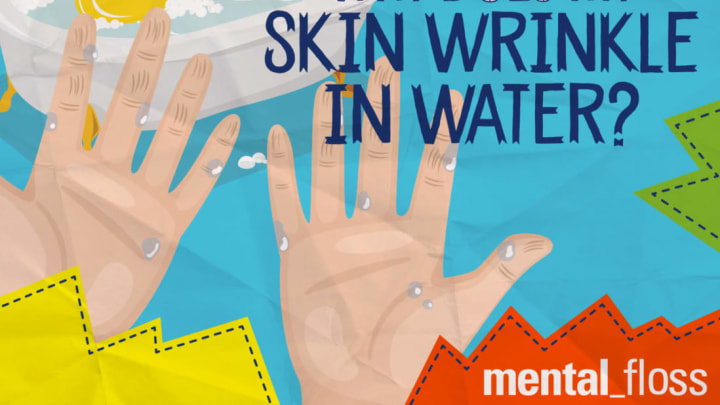Why Does My Skin Wrinkle in Water?

WHY? is our attempt to answer all the questions every little kid asks. Do you have a question? Send it to why@mentalfloss.com.
Have you ever noticed that your fingers and toes get wrinkled when you’ve been soaking in water for a while? We often call this “prune hands,” because it makes your fingers look shriveled like a prune. (A prune is a dried plum.) The shriveling happens when blood vessels under your skin get narrower. This is caused by your autonomic (Aw-toe-NAW-mick) nervous system. This system keeps your lungs breathing and your heart beating without you having to think about it.
The wrinkles seem to help us grip and not slip! Look at the bottom of your shoe. Does it have grooves? Those are called treads. The tires on cars and buses have treads too. The water that goes into those narrow grooves gets pushed away. It works the same way with your skin. Water drains from your hands through these grooves. We think this helps us to hold onto objects better. Scientists tested this theory with an experiment. They asked people with wet, wrinkled hands to pick up wet marbles and dry marbles. People picked up the wet marbles faster with wet, wrinkled hands.
Some scientists now think that humans evolved (Ee-VAWLVD)—changed over time—to have this reaction. Being able to hold onto wet things might have helped our ancient ancestors survive. Think about it: if your food lives in a wet place, like a river, ocean, or rainforest, you have a better chance of grabbing it if your fingers “stick” to it. If you are climbing a wet tree, wrinkled fingers might help keep you from falling. Wrinkled toes can help, too. If you’re barefoot, your toes need a good grip in wet or muddy places.
Want to hear more about the marble experiment? Watch this video from SciShow.